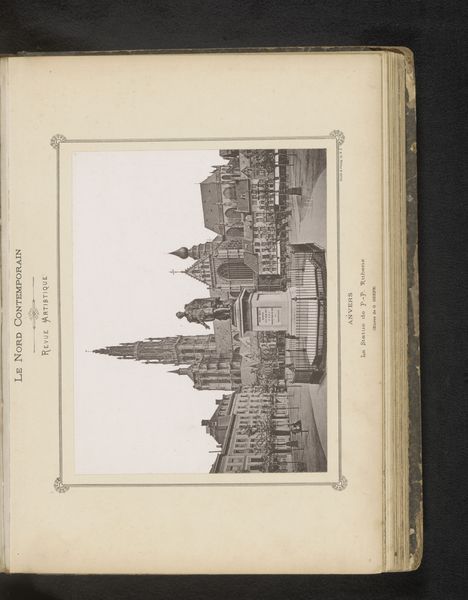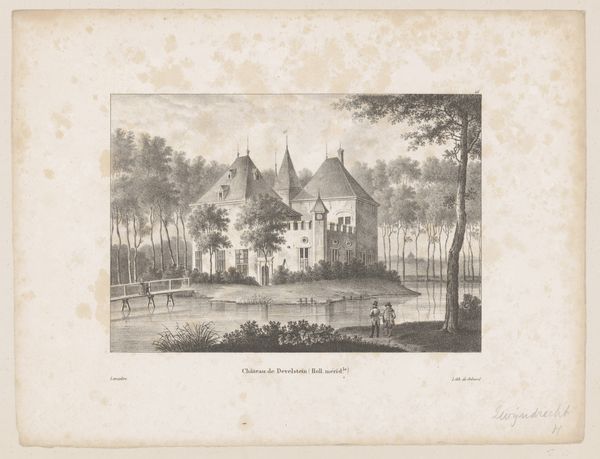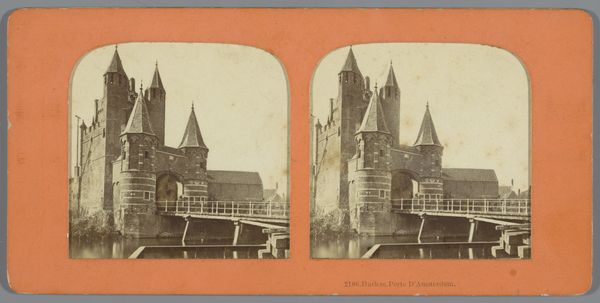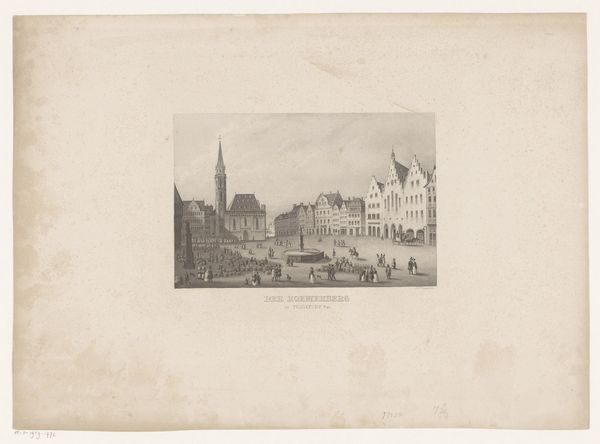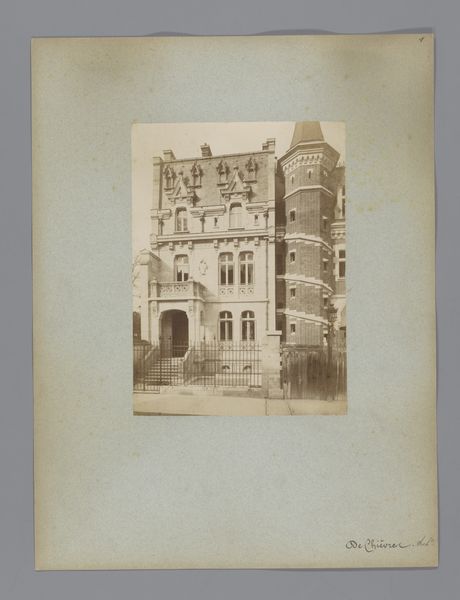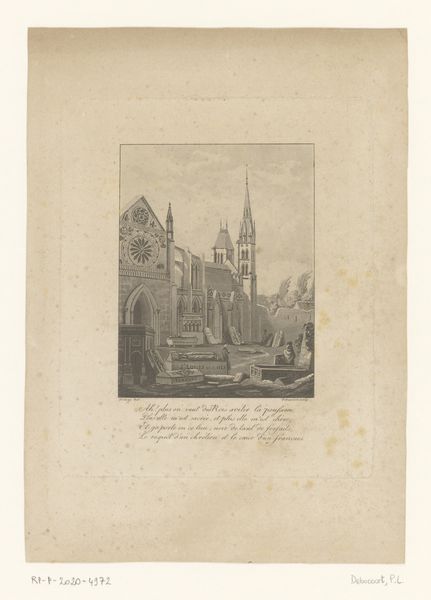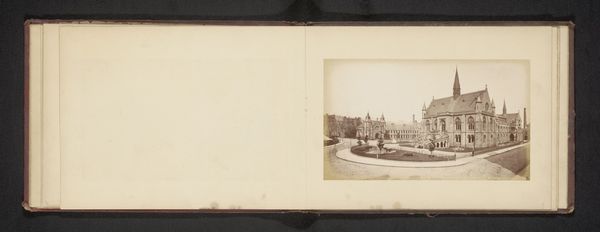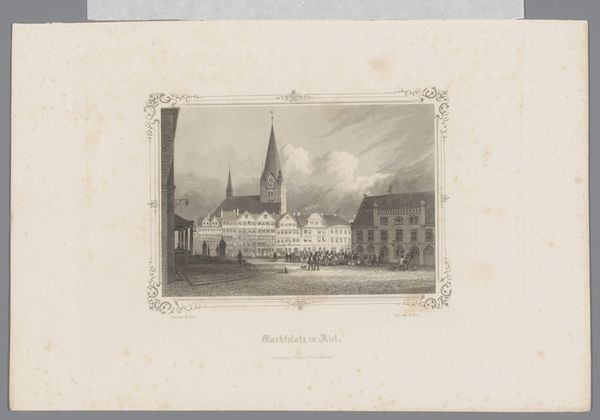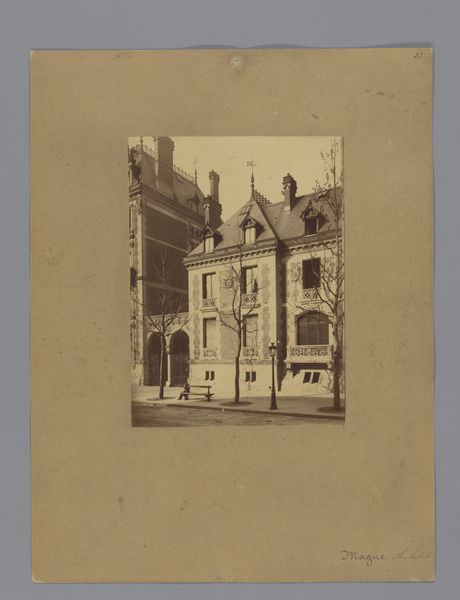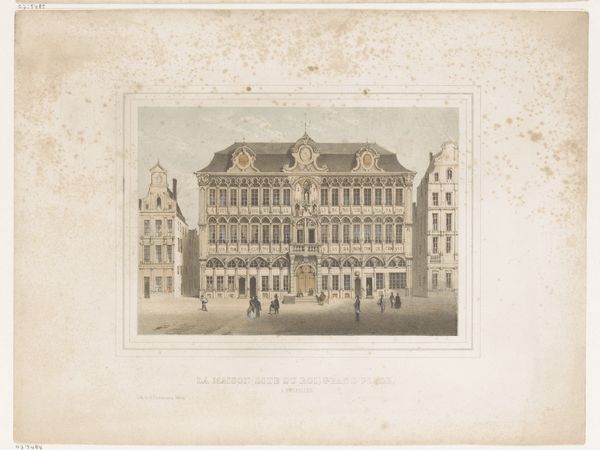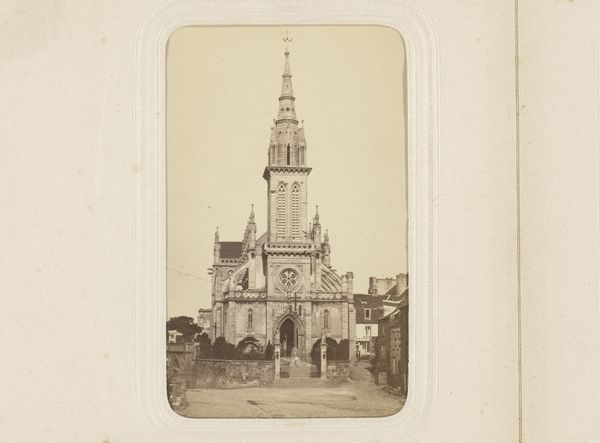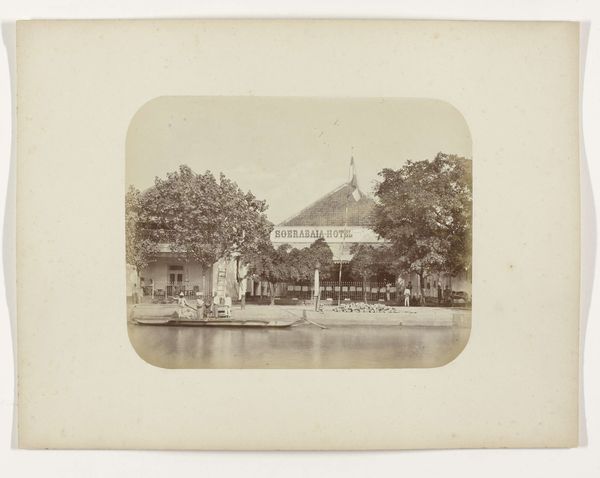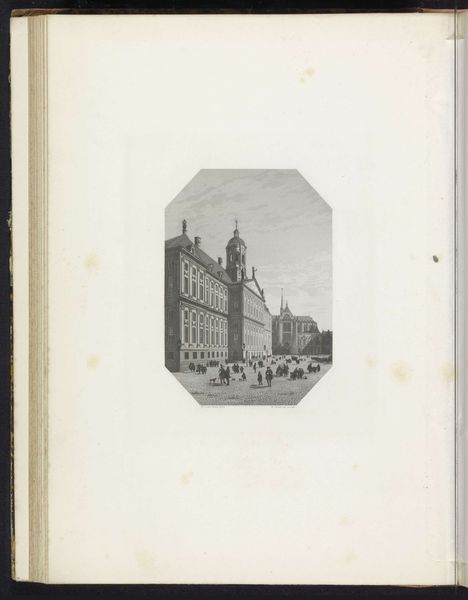
photography, albumen-print
#
dutch-golden-age
#
landscape
#
photography
#
cityscape
#
albumen-print
Dimensions: height 98 mm, width 62 mm
Copyright: Rijks Museum: Open Domain
This albumen print of the Waterpoort of Sneek, was created by R. Elzinga, using a process developed in the 1850s. The technique involves coating paper with egg white and then exposing it to light through a negative. The albumen process was significant because of its reproducibility, and because it made photography accessible to a wider audience. It was a commercial process that democratized image-making, moving it away from the realm of elite painters and engravers. The sepia tones are created by the chemical reaction of silver salts with the organic material of the albumen. The final print is a testament to the artist’s skill, and the labor involved in the chemical processes. Every print required a mastery of the precise timing and temperature of the chemical solutions. Photography such as this example, shows the way that artistic vision can be mediated through complex chemical processes. And it reminds us to consider the labor and technology that underpins every image we see.
Comments
No comments
Be the first to comment and join the conversation on the ultimate creative platform.
